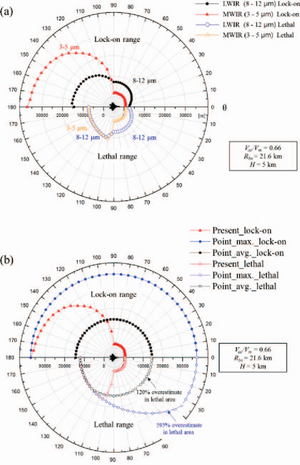Aerial Attack Study (Basic Limitations of the AIM-9B Missile against a Non-Maneuvering Target)
Basic Limitations of the Disturbed Sight and the 20MM Cannon -- IR Pattern
Basic Limitations of the AIM-9B (GAR-8) Missile against a Non-Maneuvering Target
AIM-9B is a supersonic infra-red-homing missile, launched in the target’s tail cone on a pursuit course, using the fixed sight. After launch, the missile maneuvers to establish a collision course with the target. In other words, the missile determines where the target is going and heads for that point in space. To successfully employ Sidewinder in a given tactical situation, you must be within its firing envelope. This firing envelope is determined by: (1) The radiation pattern of the target and (2) The performance envelope of the missile. The radiation pattern of a particular target is the area in which you can detect its IR radiation. The performance envelope is determined by: Range of the missile, number of G which the missile can pull and lambda (look -angle) limitations. Thus, the basic limitations of the missile, against a non-maneuvering target are determined by: Infra-red pattern, range, G and lambda. Since tactics are developed according to the performance capabilities or limitations of the weapons used, discussion of the limitations is in order.
Basic Limitations of the Disturbed Sight and the 20MM Cannon -- IR Pattern
